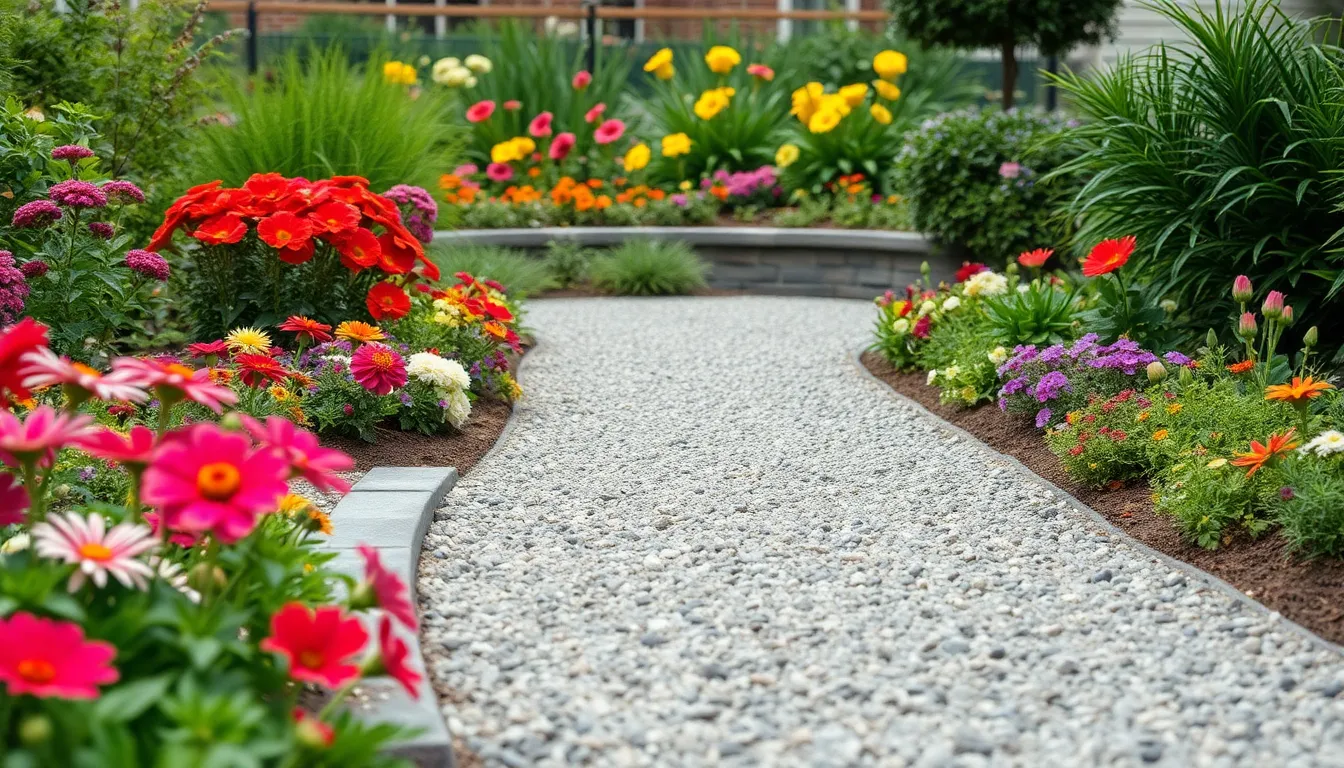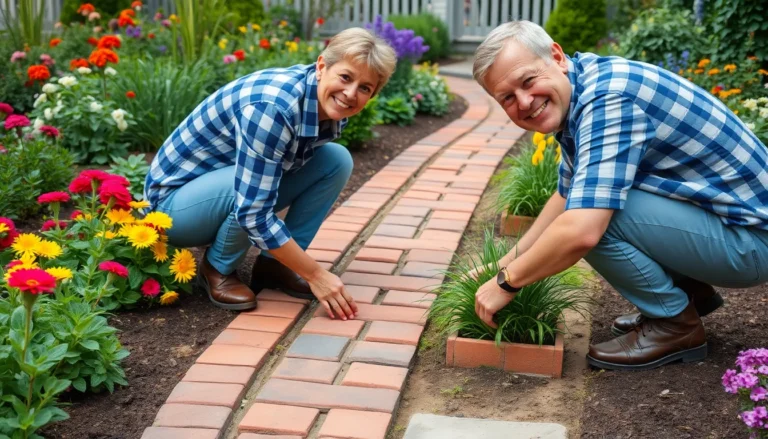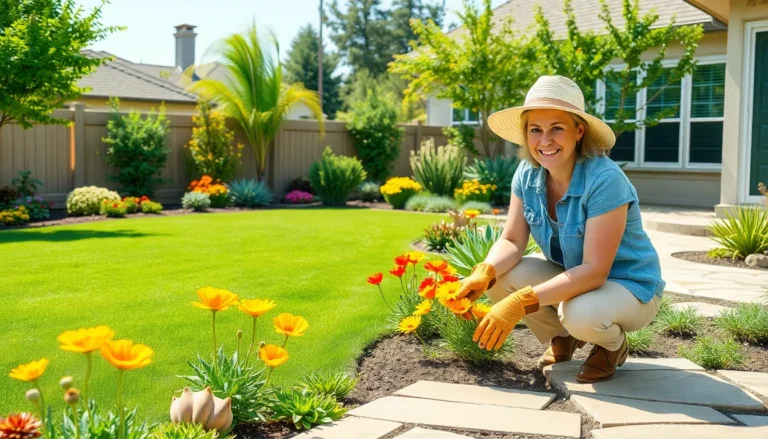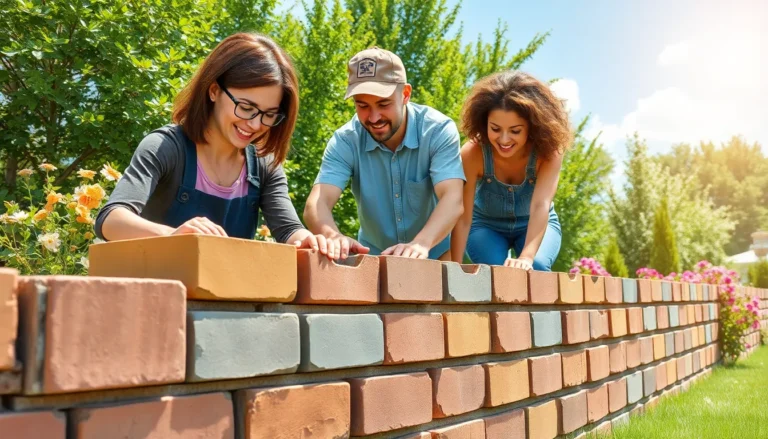Crushed granite landscaping isn’t just a trend; it’s the secret sauce for transforming outdoor spaces into stunning retreats. Imagine walking through a garden where the crunch underfoot feels like nature’s applause. This versatile material not only looks chic but also offers durability that rivals even the toughest of your in-laws.
Crushed Granite Landscaping
Crushed granite serves as an ideal material for landscaping due to its natural beauty and versatility. The stone is available in various colors, allowing homeowners to select shades that complement their outdoor aesthetics. Many landscapers appreciate the crushed texture, as it adds a rustic charm to pathways, patios, and gardens.
Durability stands out as one of the primary benefits of crushed granite. This material withstands varying weather conditions, maintaining its form and integrity over time. Unlike traditional gravel, crushed granite doesn’t shift or degrade easily, making it suitable for areas with high foot traffic.
Its drainage properties enhance its appeal. Crushed granite facilitates water runoff, preventing pooling and promoting healthy plant growth. This characteristic proves particularly beneficial for gardens and flower beds, as it ensures optimal moisture levels around root systems.
Crushed granite also contributes to eco-friendly landscaping practices. As a natural material, it reduces the need for chemical treatments common with artificial surfaces. Using crushed granite aligns with sustainable practices, appealing to environmentally conscious homeowners.
Maintenance remains simple with crushed granite. Occasionally, raking and leveling the surface keeps it looking fresh and tidy. Unlike traditional mulches, it does not require frequent replenishing, resulting in low upkeep costs for homeowners.
Crushed granite can create visually appealing settings, enhancing overall landscape design. Whether used for pathways, decorative borders, or as a base for other features, its aesthetic and functional qualities combine effectively. By considering crushed granite, homeowners can elevate their outdoor spaces for years to come.
Benefits of Crushed Granite Landscaping
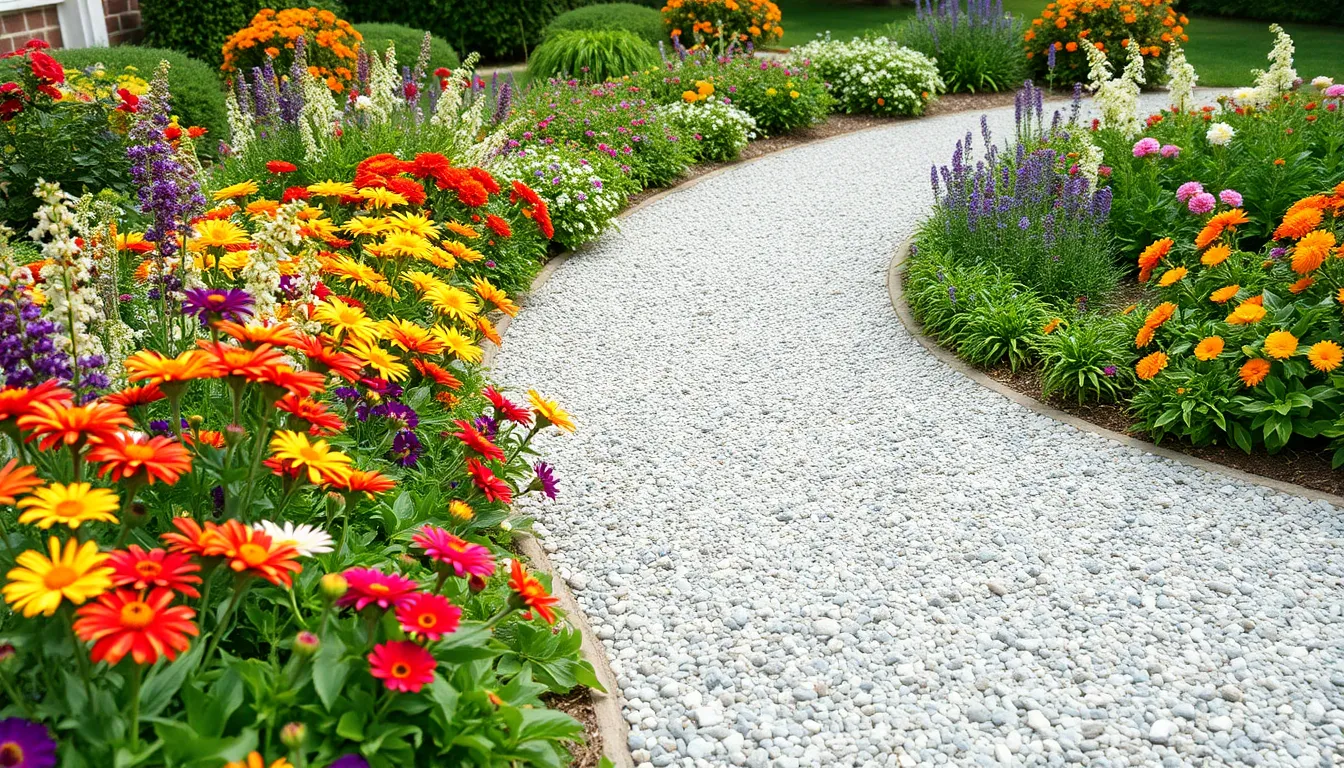
Crushed granite landscaping brings several advantages, enhancing both beauty and functionality in outdoor spaces.
Aesthetics and Versatility
Many homeowners appreciate the aesthetic appeal of crushed granite. The material is available in various colors, making it easy to complement any landscape design. Textures range from fine to coarse, allowing for unique applications in gardens and pathways. Pathways gain a rustic charm, while patios create inviting spaces for gatherings. Beyond beauty, crushed granite serves diverse landscaping purposes, including decorative borders and mulch replacements. Its versatility enables creative landscaping solutions that suit individual preferences.
Durability and Longevity
Durability stands as a significant benefit of crushed granite. This material withstands harsh weather conditions, maintaining its structure over time. Foot traffic doesn’t compromise its integrity; crushed granite holds up well in high-use areas. Installation involves minimal effort, with long-lasting results that reduce replacement frequency. Longevity translates to lower maintenance costs and less environmental impact compared to traditional mulch options. Properties such as excellent drainage further support its appeal, promoting healthier plant growth while preventing water pooling.
Installation Process for Crushed Granite
Crushed granite installation involves several key steps to ensure a successful outcome. Proper preparation and careful laying techniques maximize durability and aesthetic appeal.
Preparation of the Site
Selecting the right location is crucial. Identify the areas needing crushed granite, ensuring they meet design and drainage requirements. Remove existing vegetation or debris, creating a clean slate for installation. To establish a solid base, excavate the area to a depth of 2 to 4 inches. Consider using landscape fabric to prevent weed growth in the future. Finally, compact the soil thoroughly to provide stability for the crushed granite layer.
Laying the Crushed Granite
Begin spreading the crushed granite evenly across the prepared site. Using a shovel or rake helps achieve a uniform layer, typically 1 to 2 inches thick. Focus on ensuring the granite is level to maintain an even walking surface. For larger areas, compacting the crushed granite with a plate compactor enhances stability and prevents shifting. Raking the surface post-compaction smooths out any irregularities, providing a polished finish. Adding a border, such as bricks or stones, creates a defined edge and adds visual interest to the landscape.
Maintenance Tips for Crushed Granite Landscaping
Maintaining crushed granite landscaping involves straightforward tasks that ensure its beauty and functionality endure over time. Regular care helps maintain the aesthetics and longevity of the installation.
Weeding and Cleaning
Weeding is essential for keeping crushed granite areas tidy. Hand-pulling weeds prevents them from establishing roots and growing larger. Additionally, a stiff broom or blower effectively removes debris from the surface. Cleaning can occur once every few weeks, especially in high-traffic areas. Regular inspections help identify potential weed issues early, allowing for prompt intervention. It’s important to consider using a vinegar solution as a natural herbicide for stubborn weeds that appear occasionally.
Replenishing Material
Replenishing crushed granite maintains an even surface and enhances appearance. The material may shift or settle over time, requiring an occasional top-up. Adding a layer of fresh granite, about one inch thick, provides coverage and promotes a cohesive look. Seasonal replenishment typically occurs in fall or spring, depending on the local climate. Keeping the granite level also aids in maintaining drainage capabilities, ensuring no water pooling occurs on the surface. Always choose a similar color and size to blend seamlessly with the existing material.
Cost Considerations for Crushed Granite Landscaping
Crushed granite landscaping presents various cost factors that homeowners should consider. Initial material costs typically range from $30 to $50 per ton, depending on quality and location. Additional expenses include transportation fees, which can vary significantly, especially for remote areas.
Installation costs often add another layer to the total expense. Homeowners may choose to undertake the installation themselves or hire professionals. DIY installation can save money, yet it requires time and physical effort. Hiring landscaping professionals generally costs between $50 and $100 per hour, depending on their expertise and market rates.
Maintenance costs remain low, making crushed granite a cost-effective choice. Minimal upkeep includes occasional raking and replenishing surface material as needed. Seasonal top-ups of about one inch can maintain both the aesthetic and drainage properties.
Overall, while the upfront costs can be significant, the long-term benefits of crushed granite landscaping offer valuable savings. Durability translates into reduced replacement needs, which contributes to lower overall landscaping expenses. Since crushed granite can withstand harsh conditions, replacing traditional mulches may no longer be necessary.
Assessing these cost considerations illustrates how crushed granite serves as an attractive and functional investment. With proper planning, homeowners can create beautiful outdoor spaces while staying within their budgets.
Conclusion
Crushed granite landscaping offers a unique blend of beauty and practicality that can transform any outdoor space. Its durability and low maintenance requirements make it a smart choice for homeowners looking to enhance their gardens and pathways. With various colors and textures available, crushed granite allows for creative expression while supporting eco-friendly practices.
The straightforward installation and maintenance processes further add to its appeal. By choosing crushed granite, homeowners invest in a long-lasting solution that not only elevates their landscape design but also complements their lifestyle. Embracing this versatile material is a step toward creating an inviting and functional outdoor retreat.

